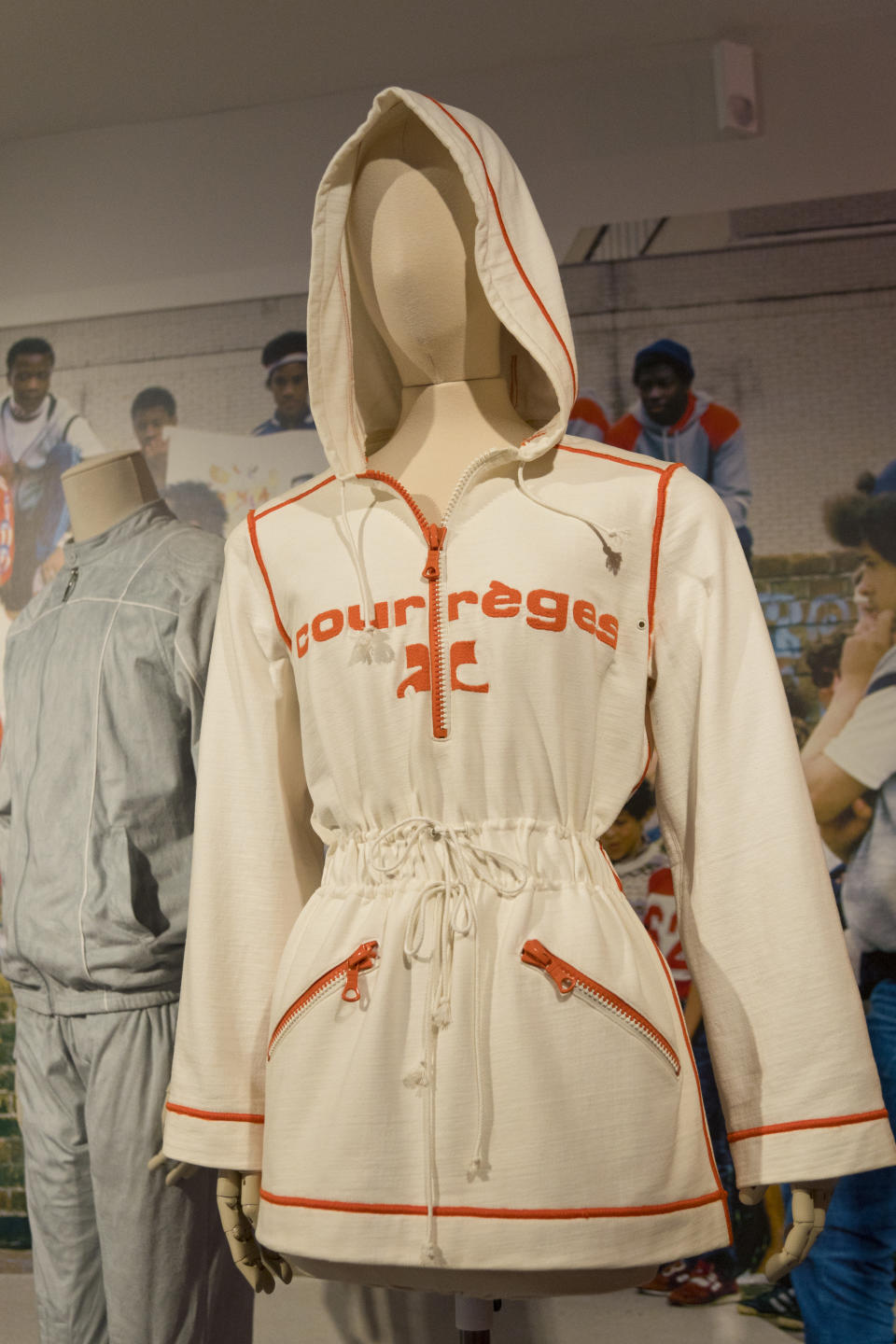With Olympics in Sight, a Paris Exhibition Highlights the Link Between Fashion and Sport

PARIS — As Paris gears up to host the Summer Olympic Games next year, a new exhibition at the Musée des Arts Décoratifs highlights the relationship between sporting competition and clothes.
“Fashion and Sport, From One Podium to the Other,” set to run from Wednesday until April 7, opens with no clothing at all. An Ancient Greek statue of a discus thrower underlines the fact that Olympic athletes used to compete naked, a fact reflected in vintage posters for the Games in Stockholm in 1912 and Paris in 1924.
More from WWD
Everything to Know About the 2024 Olympic and Paralympic Games in Paris: Venues, New Sports and More
EXCLUSIVE: Louis Vuitton Signs Swimmer Léon Marchand as Brand Ambassador
The show offers fascinating insight into the changing social mores that saw women trading corsets for Lycra bodysuits, as comfort became the dominant factor in how people dress — a theme that dovetails with another Paris exhibition currently on show at the Palais Galliera museum, titled “Fashion in Motion.”
Sophie Lemahieu, the curator in charge of post-1947 fashion and textiles collections at Les Arts Décoratifs, said the switch can be traced back to the 1920s, when designers including Jean Patou, Jeanne Lanvin, Elsa Schiaparelli and Gabrielle Chanel introduced sportswear, dressing leading athletes such as tennis champions Suzanne Lenglen and Lilí de Álvarez.
“There are ancient Roman mosaics that show women wearing the precursor of the bikini and carrying hand weights, suggesting that sporting activity was possible. Having said that, women were historically confined to the home while men were outdoors, honing their bodies,” Lemahieu told WWD during a preview visit.
“In the 1920s, we see a huge change as sport becomes increasingly important. During this period, sport is synonymous with youth and a lithe body, which was really the fashionable body shape of that time,” she added.

Before that, women were forced to wear movement-restricting corsets and bustles to practice activities such as archery and gymnastics. “At the end of the 19th century, individual sports like tennis and golf were popular among the bourgeoisie, an elite that was focused not on performance but on socializing,” Lemahieu noted.
The invention of the bicycle was a game changer, as women were allowed to wear bloomers to ensure their skirts did not get caught in the spokes — though attempts to pass off culotte skirts as fashion were pooh-poohed at first.
Lemahieu pointed to a photograph of women attending a horse race in 1911 wearing the new style, which back then was almost indistinguishable from a regular skirt. “There were lots of articles in the press decrying how awful and indecent they were. Some people commented that it might be the look of the future, but they were not ready for it then,” she explained.
There were early rule-breakers: a 1783 portrait by Louis-Auguste Brun shows Queen Marie Antoinette on horseback wearing breeches, instead of the petticoats that were de rigueur in the 18th century. “It’s remarkably modern for its time,” Lemahieu said.
The 19th century marked the introduction of sporting competitions with teams, rules and specialized sports gear. Among the 450 items on show is a jersey for New Zealand’s All Blacks rugby team from the early 20th century — its fragile state underlining the difficulty of preserving clothes used for intense athletic effort.
The display, conceived by architecture and exhibition design practice BGC Studio, highlights how athletes contributed to popularizing sportswear.

Emilio Pucci was an Italian ski champion, while Ottavio Missoni started as a 400-meter runner. Some have been forgotten, like tennis woman-turned-designer Jane Régny, while others remain current, like René Lacoste, the founder of the French sportswear brand that is the main sponsor of the show.
Among the exhibits is the earliest known example of the signature polo shirt created by the tennis star, which celebrates its 90th anniversary this year, as well as a limited-edition Lacoste shirt designed by the Campana brothers, made from hundreds of hand-stitched crocodiles, illustrating how bright colors and logos migrated from sports uniforms to fashion design.
Swimwear opened the way for unisex dressing, with men and women adopting similar swimming costumes in the 1930s. “A further illustration of female emancipation is the way beach pajamas worn over swimsuits were one of the first types of women’s pants you could wear without a problem,” Lemahieu noted.
In the ‘60s and ‘70s, leading brands like Balmain and André Courrèges dressed hosts and delegates at the Olympic Games in a display of soft power. Convinced that all 21st-century clothes would be inspired by sports, Issey Miyake waived his fee to design outfits for the delegation representing a newly independent Lithuania at the Barcelona Olympics in 1992.
A section focused on the ’80s shows how sports gear and sneakers became the default uniform of a generation, culminating in a pink velour tracksuit with a rhinestone Juicy Couture logo across the bottom.
In the museum’s atrium, mannequins in designer gear are dotted around a track under circular lights inspired by the Olympic rings.
Highlights include designs by Jean Paul Gaultier, Alexander McQueen, Vetements and Off-White, as well as examples of prominent sports collaborations, including a slinky black gown with a three-stripe band by Yohji Yamamoto for his Y-3 line for Adidas, and a patchwork dress made with upcycled soccer jerseys by Koché designer Christelle Kocher for Nike.
A final area highlights the role of athletes as trendsetters, with items like the black bodysuit worn by Serena Williams at the Roland-Garros tennis tournament in 2018, which was banned from future French Opens in a controversial decision.
On a wall, advertising campaigns featuring tennis star Naomi Osaka for Louis Vuitton and soccer player Zinedine Zidane for Dior illustrate that the love affair between fashion and sport is far from over.
Launch Gallery: Inside the ‘Fashion and Sports: From One Podium to Another’ at the Musée des Arts Décoratifs
Best of WWD


